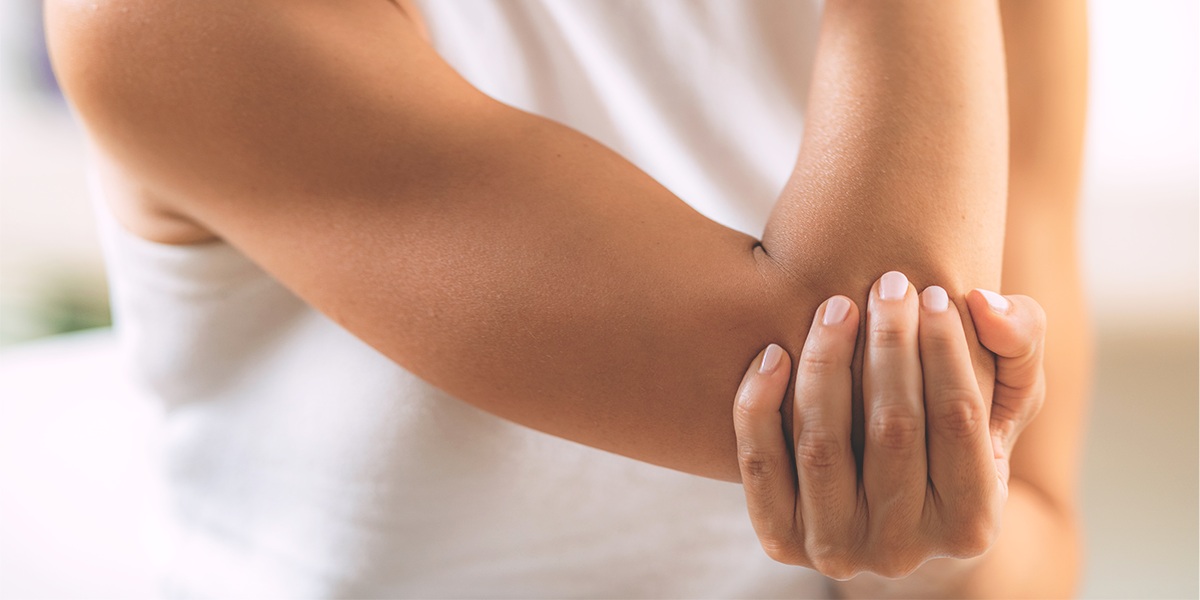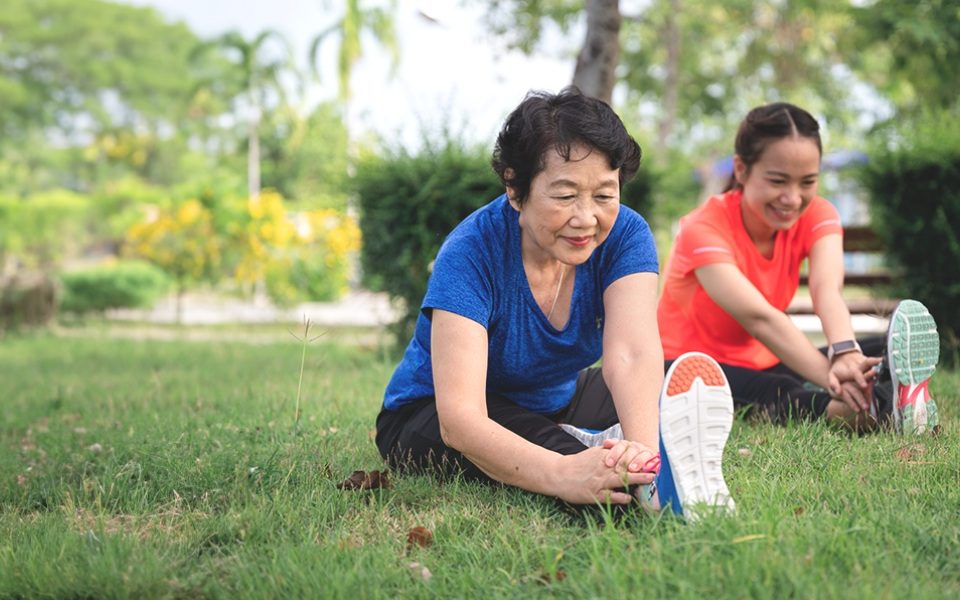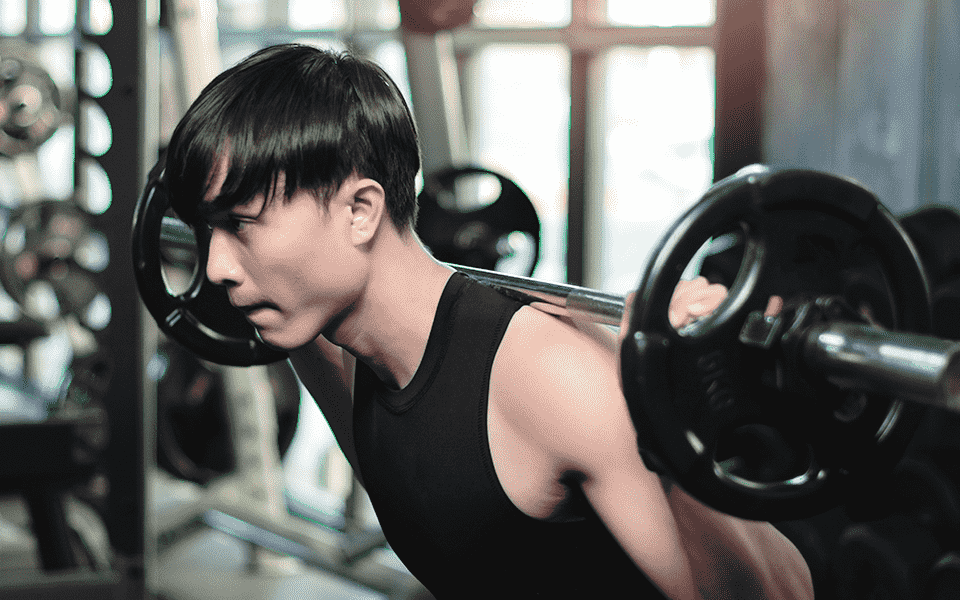Tennis Elbow Symptoms, Treatment and Rehabilitation
Tennis elbow is a common condition that can happen to anyone. It causes persistent elbow pain that can affect your daily activities. It affects approximately 1-3% of the population annually. It affects both men and women equally and is most prevalent amongst those aged between 30 and 50.
Jump to
Tennis Elbow in Singapore
Tennis elbow is a common condition in Singapore, most prevalent in adults between the age of 40 and 50. While the name suggests an association with the sport, tennis elbow can affect anyone who engages in sports or work that requires repetitive usage of the forearm.

Manage and relieve tennis elbow injury at Regis Wellness
High quality, effective, holistic treatment
What is Tennis Elbow?
Tennis elbow, also known as lateral epicondylitis, is a condition in which the tendons in your elbow are excessively strained, causing pain. This is typically the result of repetitive elbow and wrist motions. These motions strain the muscles around the elbow excessively, causing tiny tears and inflammation to develop near the lateral epicondyle, a bony lump found on the outside of your elbows. The pain experienced as a result of Tennis elbow is usually felt on the outside of the elbow but can shoot down to your forearm.
Tennis elbow usually does go away on its own, but this can take between 6 months to 2 years. Continual usage of the injured arm may aggravate the injury, causing more pain. In severe cases of Tennis elbow, surgery may be required.
Symptoms of Tennis Elbow
The main symptom of Tennis elbow is the pain felt on the outside of your elbow. This pain can range from mild to severe, from only feeling it when using your elbow to severe pain even when not moving your arm. This pain can sometimes radiate from your elbow to your forearm and wrist.
You will typically experience pain while:
- Gripping small objects
- Twisting your forearm
- Fully extending your arm
- Holding something in your hand, such as a cup
If you are experiencing the following symptoms, you may have Tennis elbow. Tennis elbow is not always a sports injury and can happen to anybody.
Common causes of Tennis Elbow
While Tennis elbow is typically known as a sports injury, it can happen to non-athletes as well. Tennis elbow occurs when the muscles in the forearm are strained and overused. The repetitive contraction of the forearm muscles that control the movements of your hand and wrist can cause tiny tears in the tendons that connect these muscles to the lateral epicondyle on the outside of your elbow.
As such, hand motions that require regular, repeated use of the forearm muscles can result in Tennis elbow. These motions can include:
- Plumbing
- Painting
- Using a screwdriver
- Cutting up cooking ingredients
- Regular and repetitive usage of a mouse at your computer
Risk Factors for Tennis Elbow
As the name suggests, Tennis elbow can be caused by playing tennis regularly due to the repetitive use of the forearm and elbow. However, similar sports and other activities that require the use of the forearm and elbow can also lead to the development of Tennis elbow. Risk factors for Tennis elbow may include:
- Regular participation in sports that require repetitive elbow and forearm motions
- Jobs that require repetitive elbow and forearm motions, such as a carpenter or a plumber.
- Physical trauma, such as a direct blow to your elbow.
- Age. The risk of developing Tennis elbow increases with age.
- Lack of stretching before engaging in sports.
Complications of Tennis Elbow
While Tennis elbow typically does not cause any severe health complications, it can result in chronic pain if left untreated. This chronic pain may get so severe that you find difficulty grasping items, potentially affecting your physical activity and work.
Diagnosing Tennis Elbow
To diagnose Tennis elbow, your doctor will conduct a physical examination, requiring you to carry out motions such as flexing your arm, wrist and elbow in order to see where you feel the pain. Imaging tests, such as an X-ray or MRI (Magnetic Resonance Imaging) maybe be suggested for further assessment in order to rule out other problems that may be causing your elbow pain.
Preventing Tennis Elbow
Preventive steps can be taken to avoid developing Tennis elbow. These include:
- Halting physical activity when you feel pain in your elbow. Pain is a signal from your body and ignoring this signal can lead to damage and tears to your tendons.
- Strengthen your forearms and wrist muscles so that they are better equipped to deal with strains and become less prone to injuries.
- Stretching your wrists and arms before carrying out physical activity can be effective in reducing the risk of injuries.
- An elbow brace should be used if your elbow is injured. This prevents the injury from worsening.
- Ensure that your sports equipment suits you. For example, a racquet that is too heavy for you may place additional stress on your arm.
Tennis Elbow Treatments
While Tennis elbow can go away on its own without treatment, it may last for up to 18 months, causing pain of varying degrees during this period of recovery. Treatment can help to speed up the healing process and at the same time, provide pain relief.
RestTo ensure a full recovery from Tennis elbow, sufficient rest is essential. The injured arm should not be used for straining activities. In addition, your doctor may suggest the use of a splint or brace to provide support for your elbow and prevent the tendons from being strained any further.
Physiotherapy for tennis elbow
Physiotherapy can help treat Tennis elbow by increasing the strength and flexibility of the muscles involved. If your Tennis elbow is a result of sporting activity, a physiotherapist can also help to correct your motions and technique, for example, changing your stroke to one that is less straining on the forearm and elbow. Exercising can also promote blood circulation to the tendons, aiding the recovery process. Your physiotherapist will also ensure that you carry out these exercises in a safe manner so as to avoid aggravating the injured elbow.
Physiotherapy Manual Therapy and Exercises
Soft Tissue Mobilisation: Soft tissue mobilisation techniques, such as massage, myofascial release, and cross-friction massage, are used to reduce muscle tension, break down scar tissue, and promote healing of the affected muscles and tendons.
Joint Mobilisation: Gentle joint mobilisation techniques may be applied to the elbow joint to improve mobility, reduce stiffness, and restore normal joint mechanics.
Strengthening Exercises: Specific exercises target the muscles of the forearm, wrist, and hand to improve strength and endurance. Eccentric exercises, in which the muscle lengthens while under tension, are often prescribed to stimulate tendon healing and improve tendon resilience.
Stretching Exercises: Stretching exercises for the forearm muscles help improve flexibility and reduce muscle tightness. Gentle stretching of the wrist extensors and flexors can alleviate tension on the tendons and promote healing.
Functional Exercises: Functional exercises focus on simulating activities that aggravate tennis elbow symptoms. Gradual reintroduction of functional movements with proper technique can help improve tolerance to activities of daily living and sports participation.
TENS Therapy
Transcutaneous Electrical Nerve Stimulation (TENS) units deliver low-voltage electrical currents to the skin, which can help modulate pain signals and provide temporary pain relief in tennis elbow.
Ultrasound Therapy
Ultrasound therapy delivers high-frequency sound waves to the affected area, promoting tissue healing, increasing blood flow, and reducing pain and inflammation in tennis elbow.
TCM for Tennis Elbow
Traditional Chinese Medicine (TCM) offers various treatments for tennis elbow (lateral epicondylitis), aiming to reduce pain, inflammation, and promote healing of the affected tendons and muscles.
TCM Acupuncture
Acupuncture involves inserting thin needles into specific acupuncture points along meridians (energy pathways) associated with the affected area. In the case of tennis elbow, acupuncture can help stimulate circulation, reduce inflammation, and alleviate pain.
TCM Herbal Medicine
Herbal remedies are often prescribed in TCM to address the underlying imbalances contributing to tennis elbow. Herbal formulas may include a combination of herbs with analgesic, anti-inflammatory, and tendon-strengthening properties. Common herbs used for tennis elbow include Angelica sinensis (Dang Gui), Ligusticum chuanxiong (Chuan Xiong), and Radix Rehmanniae (Sheng Di Huang).
TCM Cupping Therapy
Cupping involves placing cups on the skin to create suction, which helps increase blood flow, reduce muscle tension, and promote healing. Cupping therapy can be beneficial for relieving pain and stiffness associated with tennis elbow. Both stationary and moving cupping techniques may be used to target the affected area.
TCM Gua Sha
Gua Sha is a technique that involves scraping the skin with a massage tool to promote blood circulation and alleviate pain. Gua Sha therapy can help reduce inflammation, release muscle tension, and improve range of motion in the elbow joint.
TCM Moxibustion
Moxibustion involves burning dried mugwort (Artemisia vulgaris) near acupuncture points to stimulate circulation and promote healing. Moxibustion can be applied to acupuncture points located around the elbow to enhance the therapeutic effects of acupuncture treatment for tennis elbow.
Disclaimer:
The information on this website, including but not limited to, text, graphics, images, videos and all other materials contained on this website is for informational purposes only. None of the material is meant to replace a certified and registered Doctor's professional medical advice, diagnosis, and treatment.
No warranties or representations are given in respect of the medical information. Regis Wellness, Regis Wellness’s staff, and the website's operator will not be held liable if a user suffers any injury or loss after relying upon the medical information on this website.
Any devices used for technology-enhanced therapies are intended for use only for general well-being purposes or to encourage or maintain a healthy lifestyle and is not intended to be used for any medical purpose (such as the detection. diagnosis, monitoring, management or treatment of any medical condition or disease). Any health-related information provided by this device or software should not be treated as medical advice. Please consult a certified and registered Doctor for any medical advice required. As with all medical conditions, there are exceptions and nuances to individuals’ condition and treatment modalities. We aim to provide only a general understanding for each section.
A. Molsberger, E. Hille, “THE ANALGESIC EFFECT OF ACUPUNCTURE IN CHRONIC TENNIS ELBOW PAIN”, Rheumatology, Volume 33, Issue 12, December 1994, https://doi.org/10.1093/rheumatology/33.12.1162
DerSarkissian, Carol. “Tennis Elbow (Lateral Epicondylitis).” Tennis Elbow Symptoms, Causes, and Treatments, WebMD, 13 June 2020, https://www.webmd.com/fitness-exercise/tennis-elbow-lateral-epicondylitis
Felson, Sabrina. “Sore Arm? It Might Be Tennis Elbow.” Tennis Elbow: Causes, Symptoms, and Risk Factors, WebMD, 5 Feb. 2022, https://www.webmd.com/pain-management/tennis-elbow.
K., Kristina & Zhu, at el. “Tennis elbow treatment with acupuncture”. 2017.
“Overview.” Tennis Elbow - NHS, NHS, 10 Nov. 2020, https://www.nhs.uk/conditions/tennis-elbow/.
“Shoulder and Elbow - Tennis Elbow/Lateral Epicondylitis.” Tennis Elbow/Lateral Epicondylitis: Overview, Causes, Symptoms, Risk Factors, SingHealth, https://www.singhealth.com.sg/patient-care/conditions-treatments/shoulder-elbow-tennis-elbow-lateral-epicondylitis.
“Symptoms.” Tennis Elbow - Symptoms, NHS, 10 Nov. 2020, https://www.nhs.uk/conditions/tennis-elbow/symptoms/
“Tennis Elbow (Lateral Epicondylitis).” Tennis Elbow: What It Is, Causes, Symptoms & Treatment, Cleveland Clinic, 17 June 2021, https://my.clevelandclinic.org/health/diseases/7049-tennis-elbow-lateral-epicondylitis#:~:text=What%20are%20the%20complications%20of,serious%2C%20long%2Dterm%20problems
“Tennis Elbow.” Tennis Elbow - Causes, Symptoms, Treatment, Diagnosis, MedBroadcast, https://medbroadcast.com/condition/getcondition/tennis-elbow.
“Tennis Elbow.” Tennis Elbow - Diagnosis and Treatment, Mayo Foundation for Medical Education and Research, 25 Feb. 2021, https://www.mayoclinic.org/diseases-conditions/tennis-elbow/diagnosis-treatment/drc-20351991
“Tennis Elbow.” Tennis Elbow - Symptoms and Causes, Mayo Foundation for Medical Education and Research, 25 Feb. 2021, https://www.mayoclinic.org/diseases-conditions/tennis-elbow/symptoms-causes/syc-20351987.
“Treatment.” Tennis Elbow - Treatment, NHS, 10 Nov. 2020, https://www.nhs.uk/conditions/tennis-elbow/treatment/#:~:text=Tennis%20elbow%20will%20get%20better,activity%20that%20caused%20the%20problem
Verma, Nikhil. Tennis Elbow Causes and Risk Factors, Sports-Health, 30 Jan. 2015, https://www.sports-health.com/sports-injuries/elbow-injuries/tennis-elbow-causes-and-risk-factors.
Verma, Nikhil. Tennis Elbow Treatment, Sports-Health, 30 Jan. 2015, https://www.sports-health.com/sports-injuries/elbow-injuries/tennis-elbow-treatment.
Wheeler, Tyler. “Do I Need Physical Therapy for Tennis Elbow?” Physical Therapy for Tennis Elbow: Exercises, Pain Relief, and Recovery, WebMD, 26 Apr. 2021, https://www.webmd.com/pain-management/physical-therapy-for-tennis-elbow


